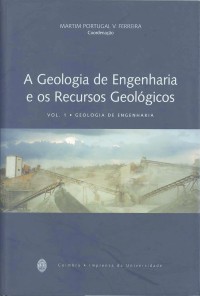Please use this identifier to cite or link to this item:
https://hdl.handle.net/10316.2/39120| Title: | Monitorização do aterro multimunicipal do centro, Coimbra | Other Titles: | Monitoring the inter-municipal landfill of the Centre, Coimbra | Authors: | Figueiredo, F. P. O. Rodrigues, N. E. V. Andrade, A. I. S. |
Keywords: | landfill;monitorization;resistivity method and tripotencial array;aterro sanitário;monitorização;método eléctrico de resistividade e dispositivos tripotenciais | Issue Date: | 2003 | Publisher: | Imprensa da Universidade de Coimbra | Journal: | http://hdl.handle.net/10316.2/2826 | Abstract: | This work describes the installation of a prototype system for monitoring the “A” Cell of the multi-municipal landfill of the Centre (Coimbra, Portugal) by resistivity electrical methods. The results obtained with this system are presented and discussed. This system is intended to locate and evaluate the evolution of contaminant plumes which may occur as a result of leaks of lixiviates and to detect possible ruptures in the geomembrane. In the present case this system was also intended to follow probable contamination plumes from an old waste damp which is located next the longer side of the landfill. This monitoring system is the first of its kind in Portugal and it consists of a set of 72 electrodes each of them positioned in the nodes of a network of squares and below the geomembrane covering the base of the landfill. The electrodes are connected to a central box where the resistivity measurements are taken. After the initial installation of the system a set of measurements was made in order to define the background resistivity of the emplacement of the landfill (average measured value = 7,5 ohm.m). At later times zones of lower resistivity as compared to the initial values would be used to detect possible flow paths of lixiviates. In the present case it is observed a general increase, with time, of the resistivity which we attribute to the consolidation of soil (average value in 2003 = 30 ohm.m). It is observed that contamination from the old damp still flows below the geomembrane even though in a smaller scale. Este trabalho descreve a instalação de um sistema protótipo de monitorização da célula A do Aterro Multimunicipal do Centro, com utilização do método eléctrico de resistividade e apresentam-se os resultados obtidos com o sistema referido. Com este sistema pretendeu-se localizar e avaliar o avanço de plumas de contaminação, no caso de fuga de lixiviados, e detectar possíveis rupturas na tela de impermeabilização. O sistema instalado é o primeiro do género em Portugal, consistindo basicamente num conjunto de 72 eléctrodos dispostos segundo uma malha quadrada de 17.5x17.5m2, colocados sob a tela de impermeabilização, na base do aterro, e ligados por cabos eléctricos a uma caixa central onde são efectuadas as medidas eléctricas. Após a instalação do sistema foram efectuadas as medidas iniciais para definir os valores de ‘background’ da resistividade do terreno onde o aterro está implantado. Os possíveis pontos de fuga- de lixiviados são detectados pela delimitação de zonas de menor resistividade eléctrica, em relação aos valores de ‘background’. A evolução dessas zonas permite planear eficazmente soluções minimizadoras dos efeitos da contaminação induzida pelo aterro sanitário, no caso de ocorrerem rupturas na tela de impermeabilização. |
URI: | https://hdl.handle.net/10316.2/39120 | ISBN: | 972-8704-14-3 978-989-26-0321-6 (PDF) |
DOI: | 10.14195/978-989-26-0321-6_4 | Rights: | open access |
| Appears in Collections: | A geologia de engenharia e os recursos geológicos. Vol. I: Geologia de Engenharia |
Files in This Item:
| File | Description | Size | Format | |
|---|---|---|---|---|
| monitorizacao_do_aterro_multimunicipal.pdf | 3.19 MB | Adobe PDF |  |
Items in DSpace are protected by copyright, with all rights reserved, unless otherwise indicated.
